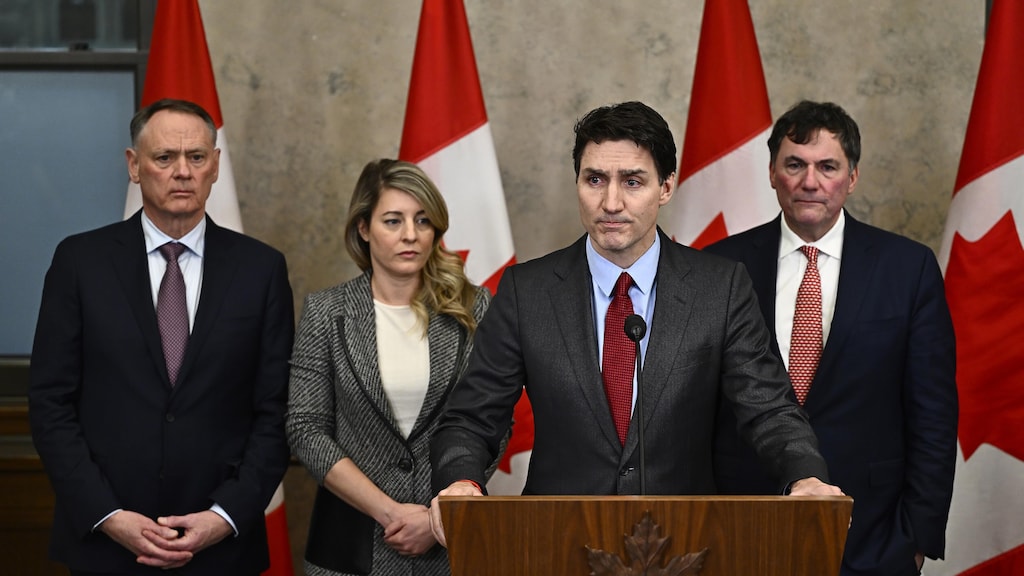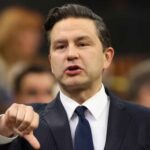Justin Pierre James Trudeau was born on December 25, 1971, in Ottawa, Ontario, Canada. He is the eldest son of Pierre Elliott Trudeau, the 15th Prime Minister of Canada, and Margaret Sinclair. His birth was historic, as he was one of the few children born to a sitting Canadian prime minister. Trudeau grew up in a political household, surrounded by influential figures, which played a crucial role in shaping his perspective and future ambitions. His early years were spent in the official residence of the Prime Minister at 24 Sussex Drive, where he was often in the public eye.
Trudeau attended the prestigious Collège Jean-de-Brébeuf, a French-language Jesuit school in Montreal, following in his father’s footsteps. He later enrolled at McGill University, where he earned a Bachelor of Arts degree in literature. His passion for education led him to the University of British Columbia, where he obtained a Bachelor of Education degree. During his early adulthood, he explored various career paths, including engineering studies at École Polytechnique de Montréal and environmental geography at McGill University, though he did not complete these programs. His diverse academic background and exposure to different disciplines provided him with a broad understanding of global issues, an asset that would later benefit him in politics.
Teaching Career and Public Engagement
Before stepping into the political arena, Justin Trudeau worked as a teacher in Vancouver, where he taught French, mathematics, and drama. His passion for education was evident in his ability to connect with students and inspire them. In addition to teaching, Trudeau was actively involved in youth advocacy and social issues. He served as the chair of the board of Katimavik, a national youth volunteer organization, and promoted programs aimed at encouraging youth participation in community service.
His commitment to public service gained national attention when he delivered an emotional eulogy at his father’s state funeral in 2000. This speech resonated with many Canadians and sparked discussions about his potential political future. Over the next few years, Trudeau remained engaged in various social causes, advocating for youth empowerment, environmental protection, and indigenous rights. His public profile continued to rise as he participated in charitable events and voiced his opinions on pressing social issues.
Entry into Politics and Parliamentary Career
In 2007, Trudeau announced his candidacy for the Liberal Party nomination in the Montreal riding of Papineau. Despite facing criticism and skepticism due to his family legacy, he worked diligently to connect with voters and address their concerns. His grassroots approach and dedication to public service helped him win the Liberal nomination and subsequently, the 2008 federal election. As a Member of Parliament, he focused on issues such as immigration, youth employment, and environmental policies.
Trudeau’s charisma and ability to engage with people from diverse backgrounds made him a rising star within the Liberal Party. In 2011, he was re-elected as an MP, and his role within the party continued to expand. His growing popularity and strong communication skills positioned him as a potential leader for the Liberals, a party that was struggling after a disappointing election loss.
Leadership of the Liberal Party and Rise to Power

In April 2013, Justin Trudeau was elected leader of the Liberal Party of Canada, marking the beginning of a new era for the party. His leadership campaign was centered on optimism, transparency, and a vision for a progressive Canada. Trudeau aimed to rebuild the party’s credibility and appeal to a younger demographic. His ability to connect with voters through social media and public engagements helped revitalize the Liberal Party’s image.
During the 2015 federal election campaign, Trudeau positioned himself as a champion of the middle class, advocating for tax reforms, infrastructure investments, and social policies aimed at improving the lives of Canadians. His energetic and optimistic campaign resonated with voters, leading to a historic victory for the Liberals. The party won a majority government, and on November 4, 2015, Trudeau was sworn in as Canada’s 23rd Prime Minister.
Prime Ministerial Tenure and Policy Initiatives
As Prime Minister, Trudeau implemented several key policies aimed at addressing climate change, social inequality, and economic growth. One of his most notable achievements was the legalization of recreational cannabis in 2018, making Canada one of the first major economies to take this step. He also introduced a carbon pricing plan to combat climate change, emphasizing Canada’s commitment to reducing greenhouse gas emissions.
Trudeau’s government focused on gender equality and diversity, appointing a gender-balanced cabinet and advocating for women’s rights. His policies included increased funding for childcare, parental leave benefits, and measures to combat gender-based violence. On the international stage, Trudeau worked to strengthen Canada’s relationships with global allies, promoting free trade agreements and diplomatic cooperation.
Challenges and Controversies
Despite his successes, Trudeau’s tenure was not without challenges and controversies. In 2017, he faced criticism for his vacation on the private island of the Aga Khan, which led to an ethics investigation. The SNC-Lavalin scandal in 2019 further damaged his reputation, as allegations surfaced that his government attempted to interfere in a legal case involving a Canadian engineering company.
In 2019, Trudeau faced another controversy when old photos of him wearing blackface makeup at multiple events emerged. This revelation sparked outrage and raised questions about his commitment to racial equality. While he publicly apologized and expressed regret, the incident had a lasting impact on his public image.
Latest News and Trade Tariffs Dispute
In 2024, Trudeau found himself at the center of an escalating trade dispute involving tariffs imposed by former U.S. President Donald Trump. The conflict revolved around trade relations between Canada, Mexico, and the United States, particularly concerning aluminum and steel imports. Mexico’s President announced a temporary delay in tariffs, but tensions remained high as Trudeau navigated diplomatic efforts to resolve the issue. The impact of these tariffs on Canadian industries and Trudeau’s response to the situation became a focal point of political debate.
Height and Physical Appearance
Justin Trudeau stands at approximately 6 feet 2 inches (188 cm) tall, making him one of the taller world leaders. He has an athletic build and is known for his active lifestyle, often participating in boxing matches and outdoor activities. His dark brown hair, blue eyes, and youthful appearance have contributed to his public image as a charismatic and approachable leader. His fashion sense and well-groomed appearance have often been highlighted in media discussions about his personality and leadership style.
Net Worth as of 2024
As of 2024, Justin Trudeau’s estimated net worth is around $10 million. His wealth is derived from his political career, book royalties, and speaking engagements. Additionally, he inherited a portion of his father’s estate, further contributing to his financial status. While he has maintained a relatively modest lifestyle compared to some world leaders, his earnings from various endeavors have ensured financial stability for him and his family.




